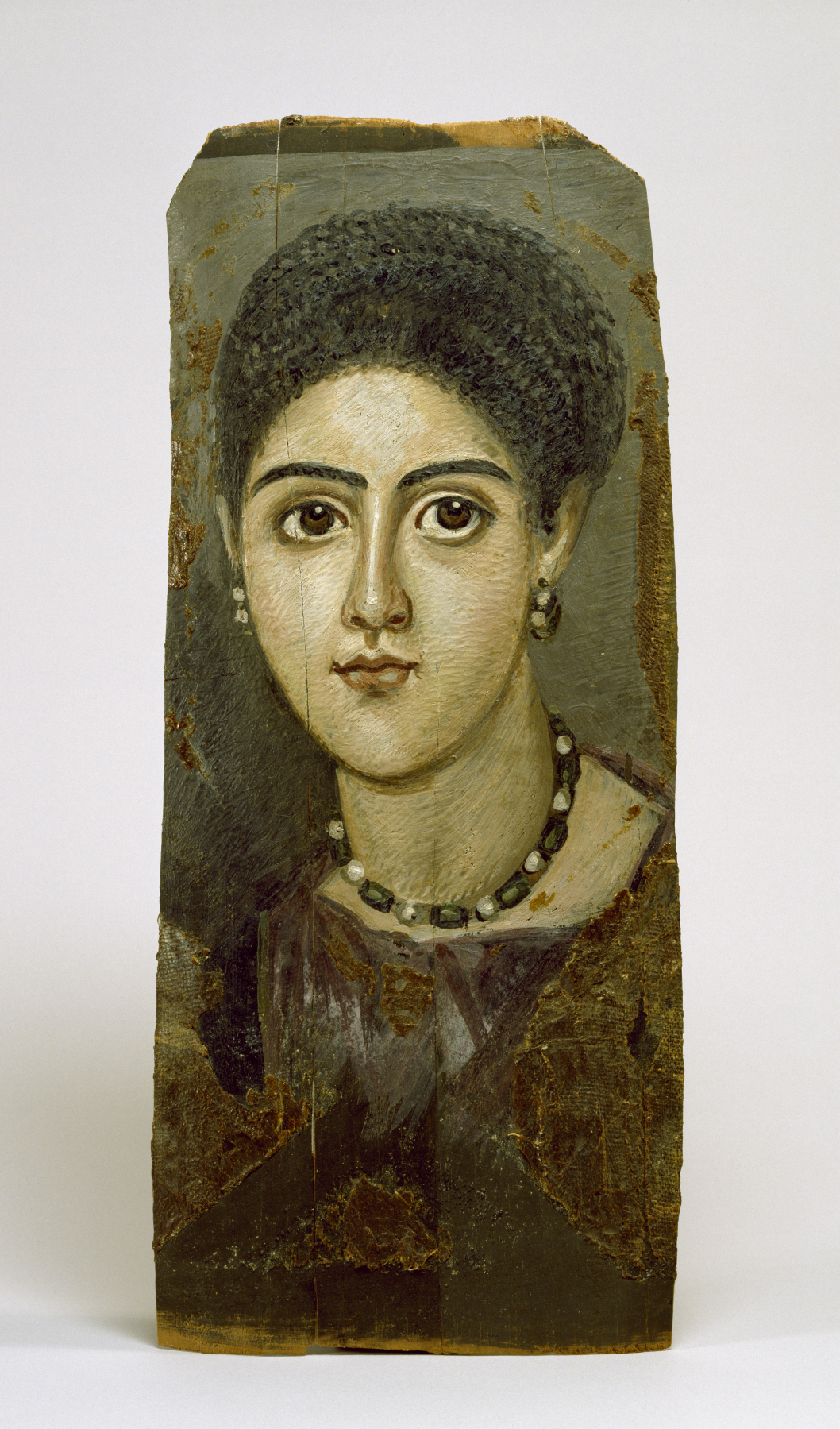Panel Portrait of a Woman
(Roman Empire )
In Roman Egypt (30 BCE-324 CE), artists adapted naturalistic painting styles to the ancient custom of making portrait masks for mummies. The portraits were often painted while the subject was in the prime of life and were hung in the home until the person's death. This practice continued in northern Egypt well into the Early Byzantine period. Hairstyles can be used to date female portrait masks. Here, the braids wound over the top of the head place the mask close to the period of the Roman emperor Trajan (AD 98-117). The painting of a portrait was an occasion for all finery to be displayed, and this woman is seen wearing a pearl and emerald necklace and earrings.
Provenance
Provenance (from the French provenir, 'to come from/forth') is the chronology of the ownership, custody, or location of a historical object. Learn more about provenance at the Walters.
Dikran Kelekian, New York and Paris [date and mode of acquisition unknown]; Henry Walters, Baltimore, 1912, by purchase; Walters Art Museum, 1931, by bequest.
Exhibitions
| 2013-2014 | Egypt’s Mysterious Book of the Faiyum. The Walters Art Museum, Baltimore. |
| 2011-2012 | Transitions to Christianity. Alexander S. Onassis Public Benefit Foundation (USA), New York. |
| 2006-2009 | Bedazzled: 5,000 Years of Jewelry from the Walters Art Museum. Frist Center for the Visual Arts, Nashville; The John and Mable Ringling Museum of Art, Sarasota; The Walters Art Museum, Baltimore. |
| 1989 | Beyond the Pharaohs: Egypt and the Copts in the Second to Seventh Centuries A.D.. Museum of Art, Rhode Island School of Design, Providence; The Walters Art Gallery, Baltimore. |
Conservation
| Date | Description | Narrative |
|---|---|---|
| 11/23/1966 | Treatment | stabilized; cleaned |
Geographies
Egypt, Faiyum (Place of Origin)
Measurements
H: 17 5/16 x W: 7 7/16 x D: 9/16 in. (44 x 18.9 x 1.4 cm)
Credit Line
Acquired by Henry Walters, 1912
Location in Museum
Accession Number
In libraries, galleries, museums, and archives, an accession number is a unique identifier assigned to each object in the collection.
In libraries, galleries, museums, and archives, an accession number is a unique identifier assigned to each object in the collection.
32.5


